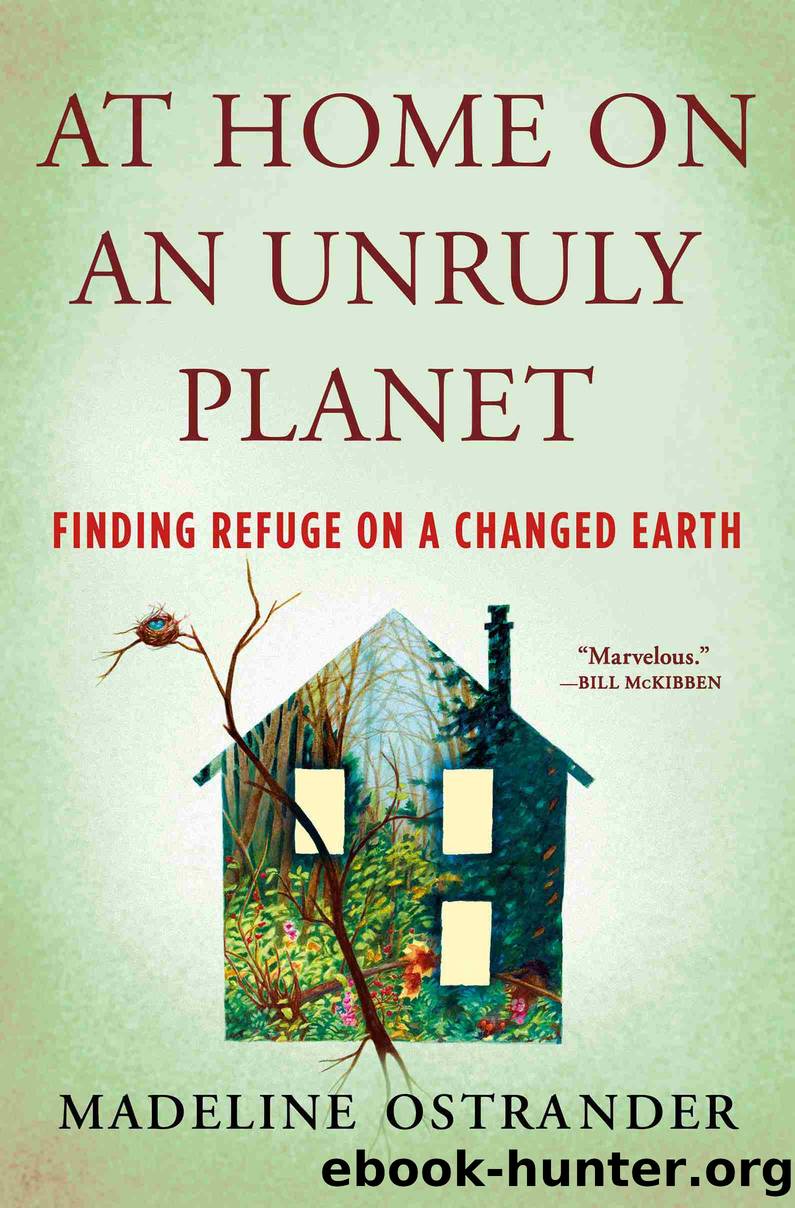At Home on an Unruly Planet by Madeline Ostrander

Author:Madeline Ostrander
Language: eng
Format: epub
Publisher: Henry Holt and Co.
* * *
In the fall of 2019, Hurricane Dorian whirled through the Atlantic, making landfall in the Bahamas and at Cape Hatteras, North Carolina. This hurricane dampened St. Augustine but didnât inflict the same level of damage as Irma or Matthew. According to the local newspaper, the St. Augustine Record, it mostly drenched the âcommonly flooded areas.â But a few feet of water filled parts of Davis Shores.
By now, the city government had a detailed plan for building infrastructure to manage somewhat higher waters, but it could happen only in a piecemeal manner, as all such bureaucratic efforts must. One part of the plan was to try to keep storm surges out of the city and its underground drainage networks. Twenty miles of stormwater pipes run under St. Augustine, some of them fifty years old or more. During Hurricane Matthew, the seawall at the bayfront had performed decently, but floodwater had risen up through the storm drains. So the tiniest first step was to install new valves in drains that would flow in only one direction, outward, preventing the sea from climbing up through the storm sewers during a flood and then seeping into the streets. At the south edge of the historic core of St. Augustine, the streets ended at Lake Maria Sanchez (a remnant of the creek that Henry Flagler once decided to fill in order to build the city center). The city would install a new pump station there and a bulkhead to keep stormwater from pouring in via the lake. The streets around city hall would also be getting major drainage upgrades.
Another part of St. Augustineâs strategy was to set aside land that was becoming waterlogged much more often. On Anastasia Island, two pieces of flood-prone land went into retirementâone south of Davis Shores and one within that neighborhood. The former would stop an apartment complex from popping up on a site that gets partly drenched more than two dozen times per yearânuisance floods averted. The latter held a historic 1940s house, the old home of a turpentine farmer. It was one of the lowest-lying properties in that part of the neighborhood, and all around it lived residents who were sick of flooding, restless, and impatient with the city. The project became controversial. It was quite a battle, admitted Jessica Beach, a city stormwater engineer who became St. Augustineâs chief resilience officer in early 2021. (A local news blog accused the city of using flood control as âa cover story ⦠to create a park in one commissionerâs neighborhood.â) Still, the city government ultimately acquired the land; helped haul the farmhouse to the Florida Agricultural Museum about twenty miles south; filled and elevated the entire site, turning it into a barrier to control flooding; and added some park benches. They named it Coquina Park. It did not solve flood problems, but Beach said it fixed one of the neighborhoodâs weakest (or perhaps wettest) links.
Meanwhile, one of the city commissioners led a task force to change the
Download
This site does not store any files on its server. We only index and link to content provided by other sites. Please contact the content providers to delete copyright contents if any and email us, we'll remove relevant links or contents immediately.
Cecilia; Or, Memoirs of an Heiress — Volume 1 by Fanny Burney(32017)
Cecilia; Or, Memoirs of an Heiress — Volume 3 by Fanny Burney(31434)
Cecilia; Or, Memoirs of an Heiress — Volume 2 by Fanny Burney(31377)
The Great Music City by Andrea Baker(30628)
We're Going to Need More Wine by Gabrielle Union(18595)
All the Missing Girls by Megan Miranda(14550)
Pimp by Iceberg Slim(13702)
Bombshells: Glamour Girls of a Lifetime by Sullivan Steve(13660)
Fifty Shades Freed by E L James(12880)
Talking to Strangers by Malcolm Gladwell(12804)
Norse Mythology by Gaiman Neil(12769)
For the Love of Europe by Rick Steves(11325)
Crazy Rich Asians by Kevin Kwan(8854)
Mindhunter: Inside the FBI's Elite Serial Crime Unit by John E. Douglas & Mark Olshaker(8658)
The Lost Art of Listening by Michael P. Nichols(7114)
Enlightenment Now: The Case for Reason, Science, Humanism, and Progress by Steven Pinker(6850)
The Four Agreements by Don Miguel Ruiz(6276)
Bad Blood by John Carreyrou(6250)
Weapons of Math Destruction by Cathy O'Neil(5792)
